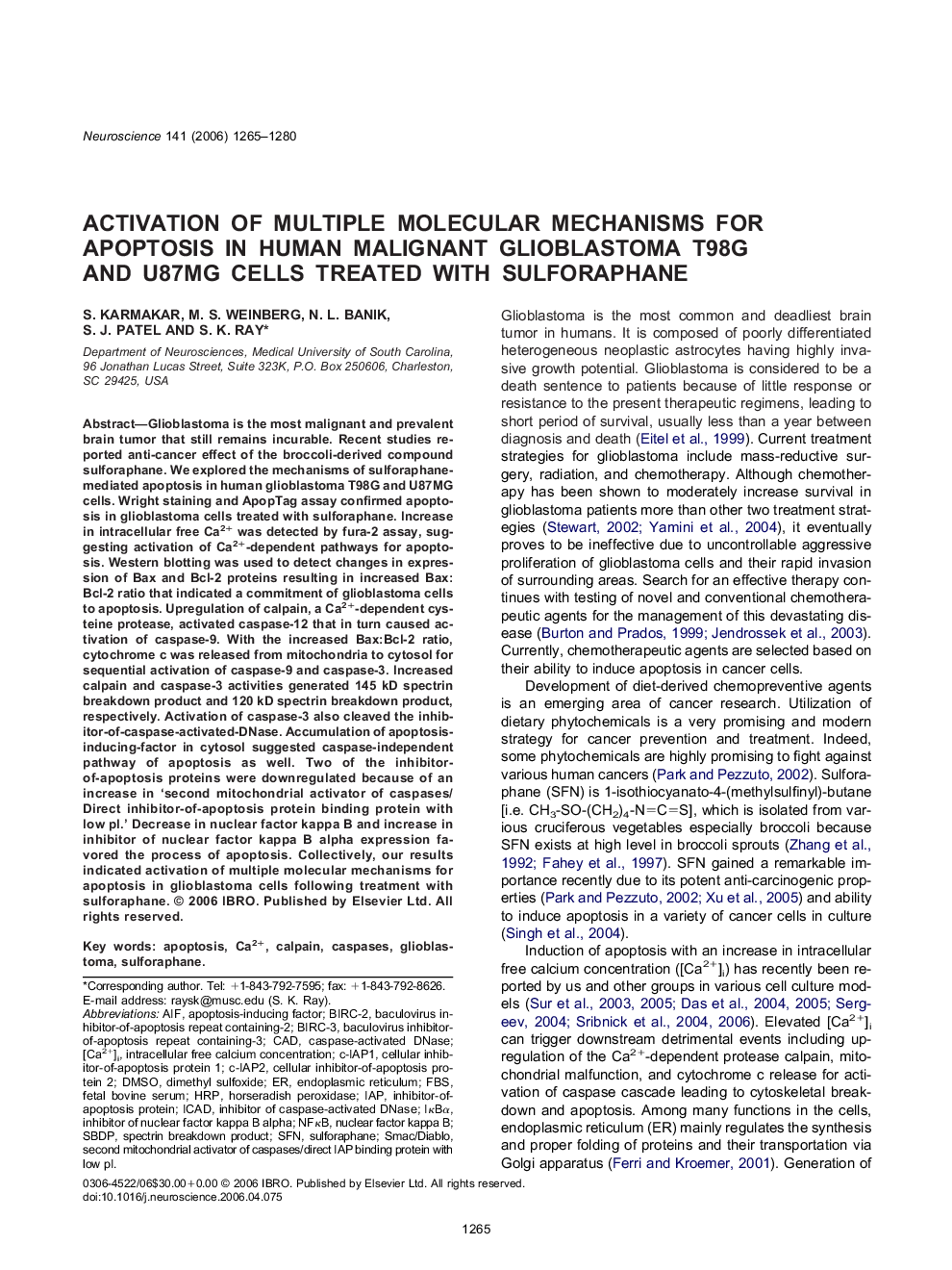| Article ID | Journal | Published Year | Pages | File Type |
|---|---|---|---|---|
| 4342535 | Neuroscience | 2006 | 16 Pages |
Glioblastoma is the most malignant and prevalent brain tumor that still remains incurable. Recent studies reported anti-cancer effect of the broccoli-derived compound sulforaphane. We explored the mechanisms of sulforaphane-mediated apoptosis in human glioblastoma T98G and U87MG cells. Wright staining and ApopTag assay confirmed apoptosis in glioblastoma cells treated with sulforaphane. Increase in intracellular free Ca2+ was detected by fura-2 assay, suggesting activation of Ca2+-dependent pathways for apoptosis. Western blotting was used to detect changes in expression of Bax and Bcl-2 proteins resulting in increased Bax:Bcl-2 ratio that indicated a commitment of glioblastoma cells to apoptosis. Upregulation of calpain, a Ca2+-dependent cysteine protease, activated caspase-12 that in turn caused activation of caspase-9. With the increased Bax:Bcl-2 ratio, cytochrome c was released from mitochondria to cytosol for sequential activation of caspase-9 and caspase-3. Increased calpain and caspase-3 activities generated 145 kD spectrin breakdown product and 120 kD spectrin breakdown product, respectively. Activation of caspase-3 also cleaved the inhibitor-of-caspase-activated-DNase. Accumulation of apoptosis-inducing-factor in cytosol suggested caspase-independent pathway of apoptosis as well. Two of the inhibitor-of-apoptosis proteins were downregulated because of an increase in ‘second mitochondrial activator of caspases/Direct inhibitor-of-apoptosis protein binding protein with low pI.’ Decrease in nuclear factor kappa B and increase in inhibitor of nuclear factor kappa B alpha expression favored the process of apoptosis. Collectively, our results indicated activation of multiple molecular mechanisms for apoptosis in glioblastoma cells following treatment with sulforaphane.
